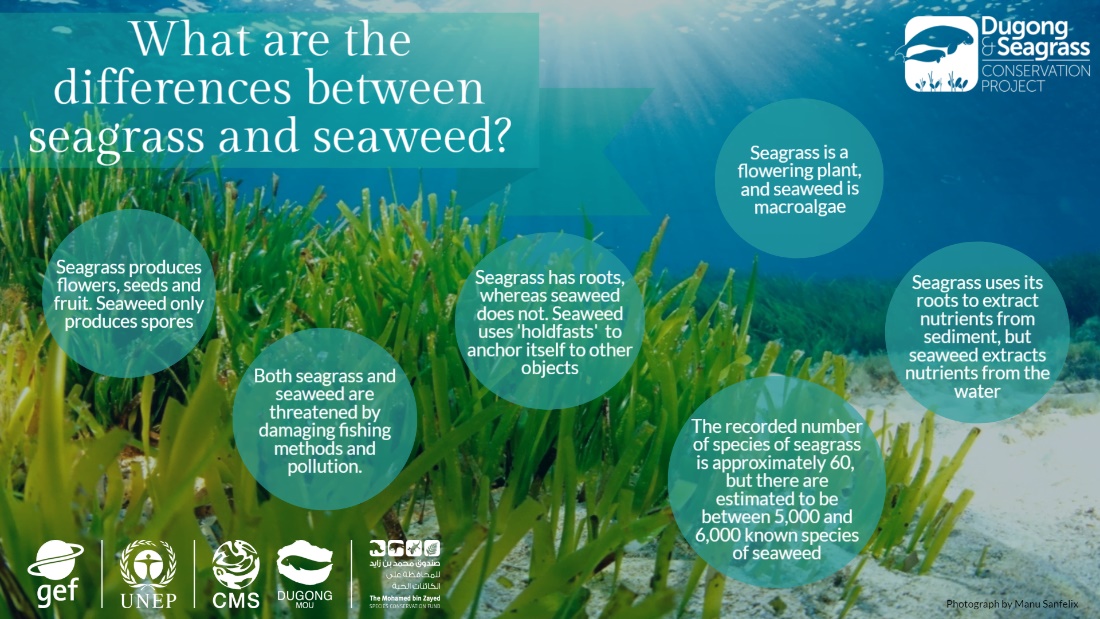Biodiversity & Environment
Seagrass Meadows
- 31 Jul 2023
- 4 min read
For Prelims: Seagrass, Carbon Sequestration, Greenhouse gas emission, Global warming, Ocean currents, United Nations Environment Programme, Ocean acidification, Gulf of Mannar, Baltic Nations
For Mains: Significance of Seagrass and Concerns Related to it.
Source: IE
Why in News?
Scuba divers in Northern Germany are extracting seagrass shoots to replant in barren areas, aiming to combat climate change and revive these ocean carbon sinks.
What are Seagrass Meadows?
- About:
- Seagrass meadows are composed of flowering plants that grow in shallow coastal waters, forming dense underwater carpets that can cover large areas.
- They thrive in areas where sunlight can penetrate the water, allowing them to undergo photosynthesis for growth.
- Also, they typically grow in sandy or muddy substrates, where their roots can take hold and stabilize the plant.
- Significance:
- Carbon Sequestration: Though they cover only 0.1% of the ocean floor, these meadows are highly efficient carbon sinks, storing up to 18% of the world’s oceanic carbon.
- This helps reduce greenhouse gas emissions and slow down global warming.
- Water Quality Improvement: They also filter pollutants from the water, trap sediments and prevent erosion, thereby improving water clarity and quality.
- This benefits both marine life and human activities such as fishing, tourism and recreation.
- Habitat and Biodiversity: They are among the most productive and diverse ecosystems on Earth, providing habitats and food for many marine animals, including fish, turtles, dugongs, crabs and seahorses.
- Coastal Protection: Seagrass beds act as natural barriers, protecting coastlines from erosion caused by waves and tidal currents.
- Carbon Sequestration: Though they cover only 0.1% of the ocean floor, these meadows are highly efficient carbon sinks, storing up to 18% of the world’s oceanic carbon.
- Concern:
- According to “Out of the Blue: The Value of Seagrasses to the Environment and to People” report of United Nations Environment Programme (UNEP), an estimated 7% of seagrass habitat is being lost worldwide each year.
- Since the late 19th century, almost 30% of seagrass area across the globe has been lost.
- The main causes of seagrass loss are:
- Coastal Development: Construction of ports and marinas can destroy seagrass habitats or reduce their light availability.
- Pollution: Runoff of nutrients, chemicals and sediments from agriculture, industry and urban areas can cause eutrophication, algal blooms and turbidity, which can smother or shade out seagrass plants.
- Climate Change: Rising sea temperatures, sea level rise, ocean acidification and extreme weather events can stress or damage seagrass plants and alter their distribution and growth.
- According to “Out of the Blue: The Value of Seagrasses to the Environment and to People” report of United Nations Environment Programme (UNEP), an estimated 7% of seagrass habitat is being lost worldwide each year.
- Seagrasses in India:
- In India, the major seagrass beds exist along the coastline of Gulf of Mannar and Palk Bay regions on the east coast, Gulf of Kachchh region on the west coast, the lagoons of islands in Lakshadweep in the Arabian Sea and Andaman and Nicobar Islands in the Bay of Bengal.
- Restoration Efforts:
- Seagrass restoration has been attempted in various regions, such as the Baltic Sea in Germany, Chesapeake Bay in the USA and the Gulf of Mannar in India.







